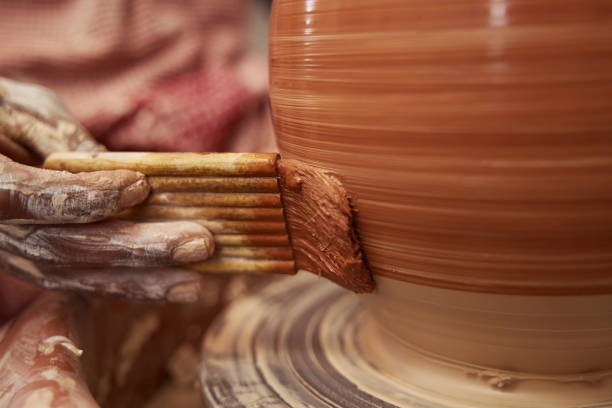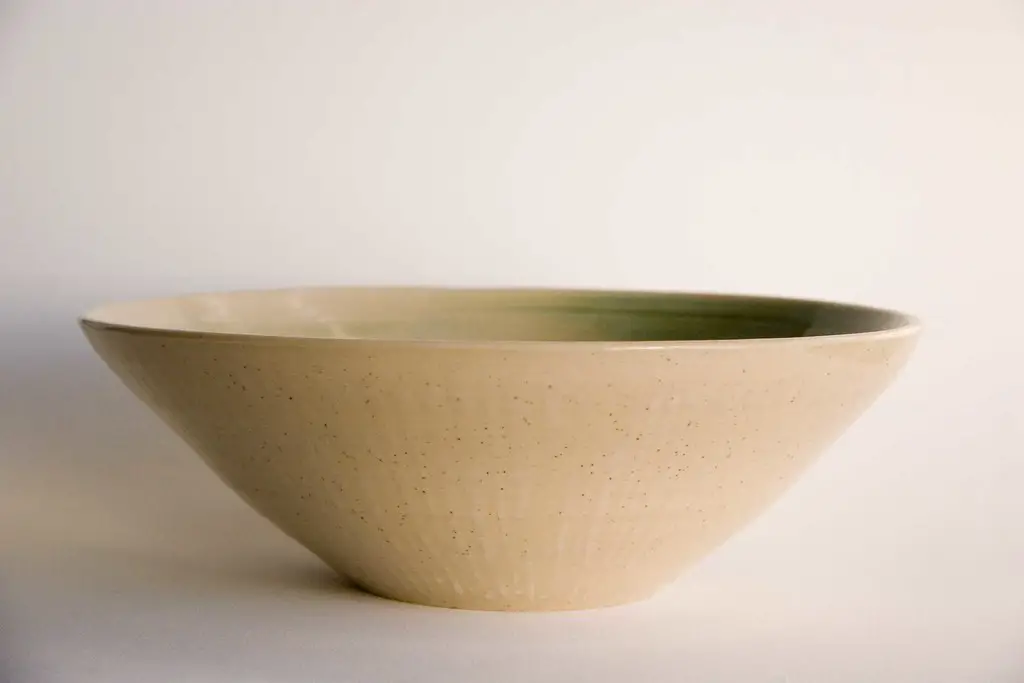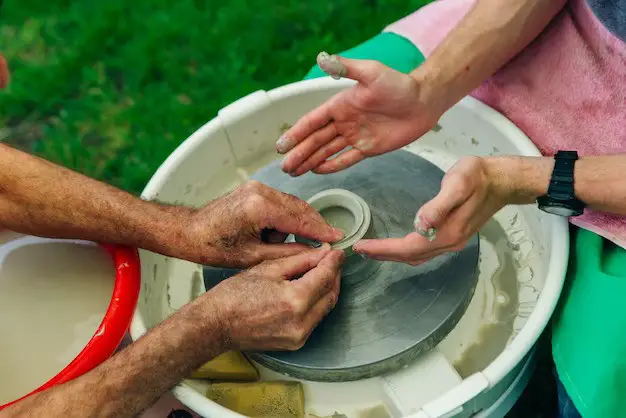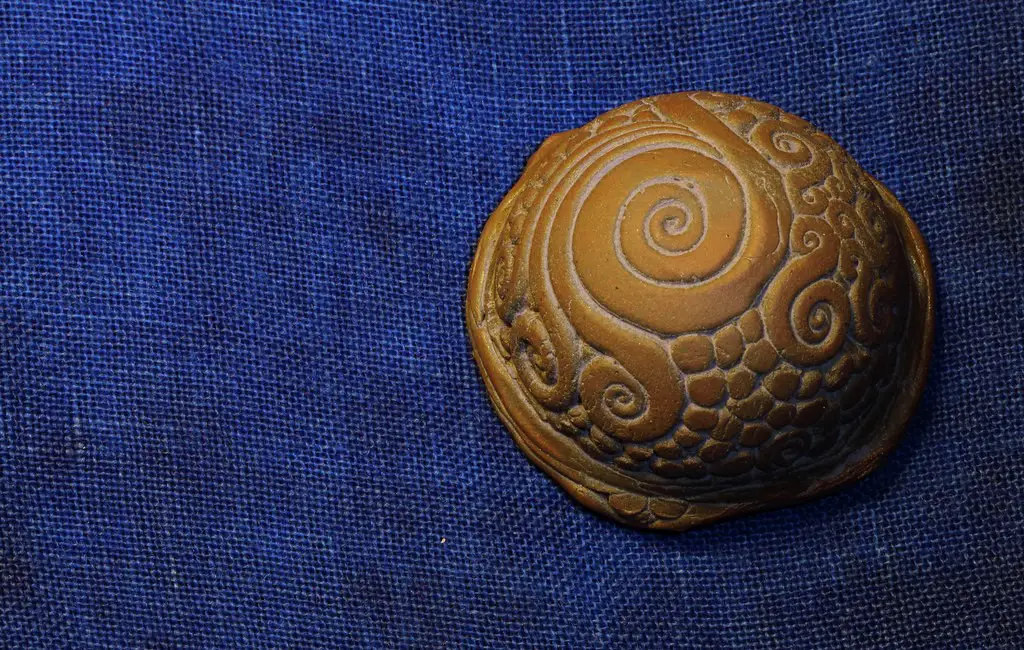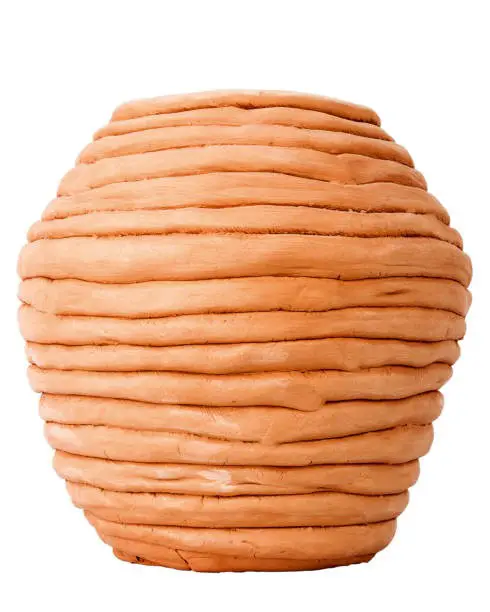Clay sculpting can be intimidating at the beginning, but when you keep doing it and become a pro at it, it is the most exquisite art you can ever learn. Now, the first thing you need to do is to choose the best clay for sculpting. The type of clay used can significantly change the outcome of your pottery work, and thus it is essential to use the right kind for the right job.
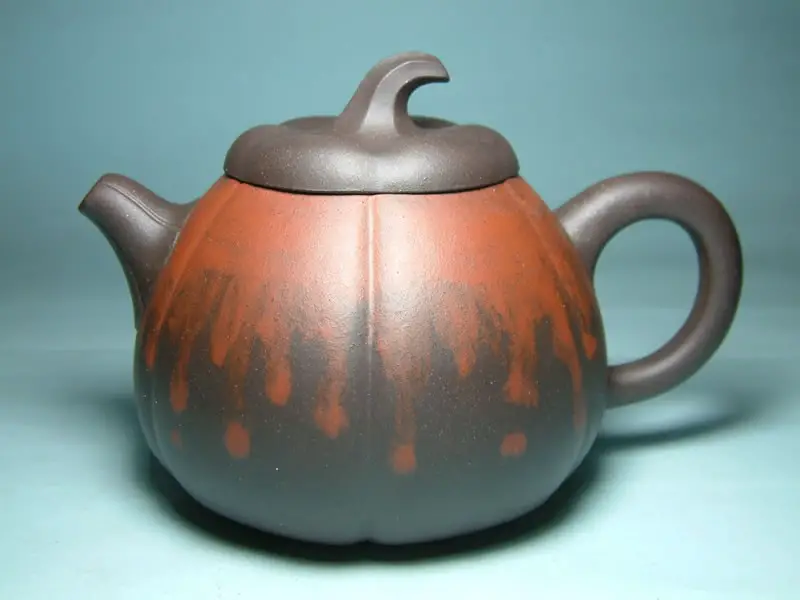
Moldings for different purposes make this art a versatile one, as you may have your own criteria and sculpting style. And you like to work with only those clays that pertain to your art. Modeling art pieces and making vessels or bowls require different kinds of clays altogether. While some artists prefer bright-colored clay, some want an original look that can be easily molded by hand.
There are a variety of clays available in the market. Every clay has a different property and a different purpose. If you are looking for the best clay for beginners, then you’re at the right place. In this article, we are going to tell different types of clays and discussed whether it is suitable for beginners or not.
Before we go ahead, check out this table comprises types of clay that are differentiated based on their properties:
Type of clay |
Main property |
Expensive |
Polymer |
Soft, pliable, easy to work, dries fast |
No |
Water-based |
Pliable dries fast keeps sealed |
No |
Plasticine |
Oily, easy to bend, and comes in different colors |
Yes |
Air dry |
Can be colored, makes detailed and fine objects |
No |
Ceramic |
Needs baking and heating |
No |
Now, you know what the different types of clay are, let’s have detailed information on different types of clay.
Polymer clay
Polymer clay is known to be one of the best clays for beginners due to its versatility and ease of handling. Since it can be customized easily, it is usually given to children for playing. Even professional artists also use polymer clay to make various challenging and complex designs. The beginners may find this clay easy to use and may also achieve good results. All you need to know is the right technique and tips for using it.
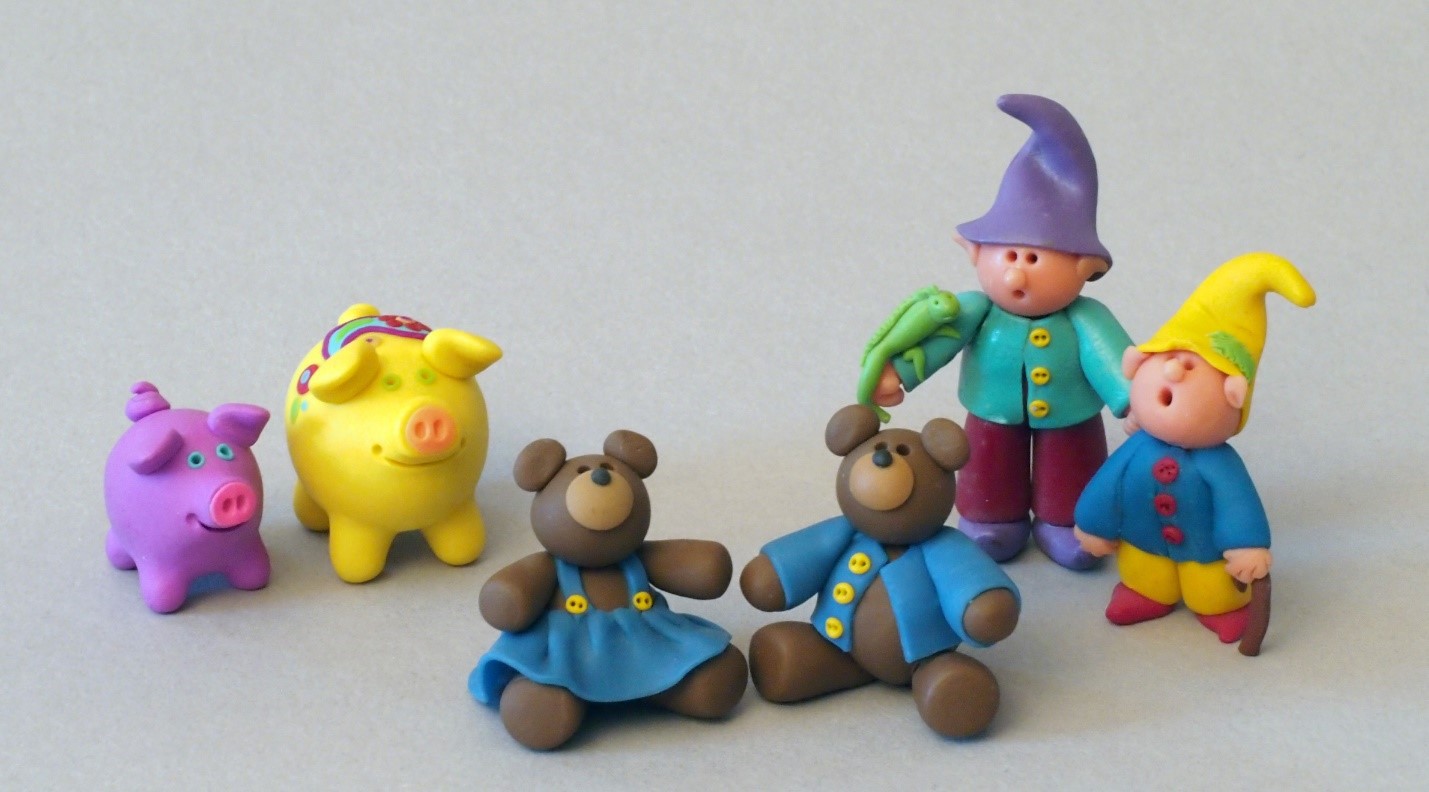
Apart from its innocuous nature, polymer clay comes in a variety of colors that seems extremely attractive to children. Only through a gentle press of a thumb, one can easily give shape to the polymer clay. It also accumulates less dust as compared to other types of clays. Polymer clay is safe for kids, hobbyists, beginners, professional sculptors, and model-makers because it is not toxic at all.
You need not seal the polymer clay because it is durable and water-resistant. It is also soft and pliable until heated. Being easygoing, polymer clay can be placed in an oven to solidify the shape given to it. However, don’t heat the clay at a high temperature. Also, do not touch it hot. This type of clay should be handled only when it has completely cooled down to avoid unwanted cracks and pieces falling apart.
After baking the polymer clay properly, it becomes very strong, and as it gets old, it gets crumbly. You can make the polymer clay a shiny form. One can also paint polymer clay. You may also use other materials along with the polymer clay to make jewelry, sculptures, decorative, crockery, etc. Check out the 32 blocks of polymer clay from GROWNEER for your kids.
Water-Based Clay
The water-based clay is mixed with water and then put to use. It is easy to work with and dries out very fast as the water evaporates. Unlike other clays, heating is not an essential requirement for modeling with water-based clay. The clay holds its shape as it comes in contact with water. Water-based clays are used for making more fluid designs that give off a sense of abstract art to the viewer. The shapes are bolder and more unconfined and add a more natural contour to the objects that appear in nature, including rocks, trees, clouds, etc.
The sculptors use water-based clay for small projects and use the clay before it becomes dry. To store the water-based clay for future use, you need to use an airtight container or sealed bag with a sprinkle of water frequently to keep it in the best form. Water-based clay can also shrink with time. Water-based clay can be smoothened easily, and hence it is considered a suitable clay for beginners. It is inexpensive and extremely pliable. There are two types of water clays, namely:
- White clay: White clay has a grayish color and a coarser texture. Artists use white clay to make matrix molds, which would contain silicone or other material inside to give a shape. It gets a bit lumpy at times but can be smoothed out with a spatula.
- WED clay: This clay has a yellowish or light brownish color and a smoother texture. As it is shinier, it is used in sculpting and gets to a leathery stage to give it a beautiful, lively finish to the sculptures. Laguna’s WED clay (EM-217) is one of the best WED clays, and it is highly recommended to fulfill all your artsy desires.
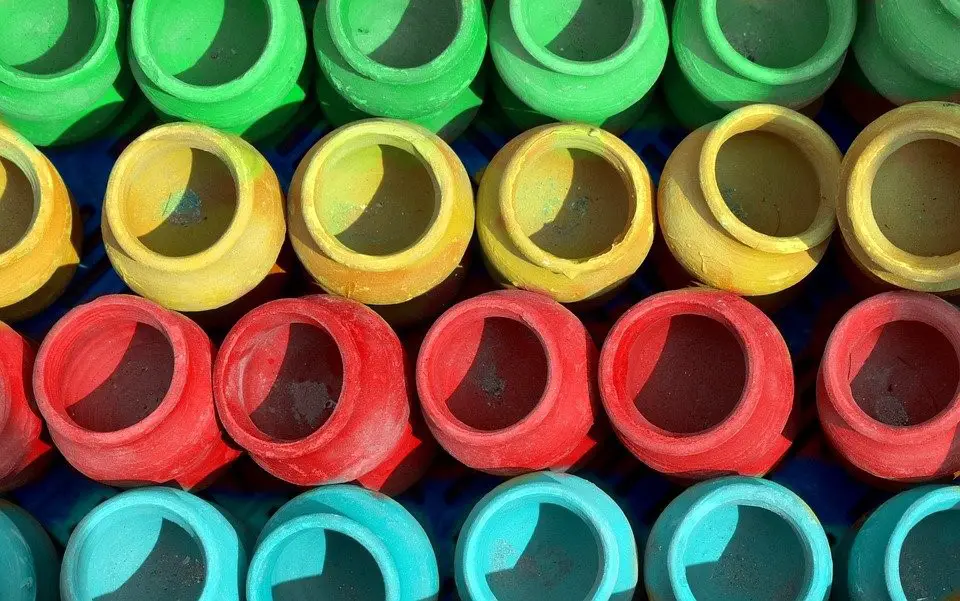
Air-Dry Clay
Air-dry clay is just like water-based clay. As the name suggests, the air-dry clay gets dried using the air around it. It does not require a kiln fire. Many experts and beginners use air-dry clay as modeling clay. The time it takes to get dried depends on the thickness of the item. A small item with less thickness may dry in a few hours, while the big items may take up to a week to get dried completely.
Many beginners use this clay because the air-dry clay does not need special sculpting tools. It can also be colored using acrylic paints, inks, and other pens. It is extensively used in arts and crafts because it does not require detailing. You can buy acrylic paint marker pens from JR.WHITE for your kids.
There are mainly two types of air-dry clay:
- Paper clay: As the name suggests, it is one of the lightest materials of clay out there. Although it is fluffy and light, it dries quite hard after being unsealed for a longer time. It tears off in a very diverse manner with a little effort. It is a cheap clay that provides a mediocre finish.
You can soften this type of clay by applying constant pressure with your hand and water. The material, despite being so light, is also opaque when hardens. Talking about paper clay, Activa Celluclay Instant Papier Mache is one of the best in the business and a great way to try out your clay modeling skills.
- Resin clay: It is a cold, sturdy, and denser clay. It dries hard quickly and resembles the texture of baked polymer clay. It breaks off like a solid, thick material, and is pulled into shape usually. It dries to give a smooth surface that makes it look like it’s of high quality. Jewelry and pendants are the best things to make using resin clay. One can soften this type of clay by applying constant pressure with the hand, and coloring it using acrylic paint. Resin clay is exceptionally translucent.
Plasticine or Oil-Based Clay
Oil-based clays or plasticine is made of oils, waxes, binder, and many other minerals. The artists prefer oil-based clay over water-based clay because it does not dry out even if it is left uncovered in a dry state. You can adjust the viscosity and consistency of the oil-based clay with temperature. One cannot heat it in the oven to bake it; instead, it will melt and become greasy when exposed to heat. Due to the property of it being super-rich and dense, you can pour the oil-based clay into a mold.
The sculptures that use oil-based clay cannot be fired, and hence cannot be ceramic. Animation artists use oil clay because the same can be used again and again, and it can also bend and mold itself easily. With Oil-based clay, the artists make fine items and detailed sculptures. Since it has oil, it does not stick to any surface. It is considered best for long-term projects. It is slightly expensive and not very pliable.
You must not add water explicitly to it, as the oil content in the clay makes it very easy to handle even after it has been left out in the open for too long. Plasticine or oil-based clay seems to be different from other types of clay, as it hardens when cooled down. These kinds of clays can be of varied textures. The softest plasticine clay available in the market takes its corresponding shape by applying a little bit of pressure with your hand.
Carving with a tool works best and can almost give off a professional look to your sculpture. You can also work with averagely soft plasticine clays. It takes shape with a bit more pressure on it, and when broken off, it is harder to stick back to each other, and thus one must use it only in particular cases. So, depending upon your purpose of use, choose the apt plasticine or oil-based clay for yourself. However, when such oil-based clays get folded, cracks are inevitable, and thus the heating must be consistent. You can purchase oil-based clay in many colors online.
Ceramic clay
Ceramic clay is baked until it gets a permanent shape. Ceramic clay contains many other things along with the clay. It can be of different types, including earthenware, stoneware, fire, and kaolin clay.
Earthenware clay is the most primitive and common clay that has incredible features. It is easy to work, with but sticky. It can dry and become hard at low temperatures. It is made in different colors. One of the earthenware clays is Terracotta.
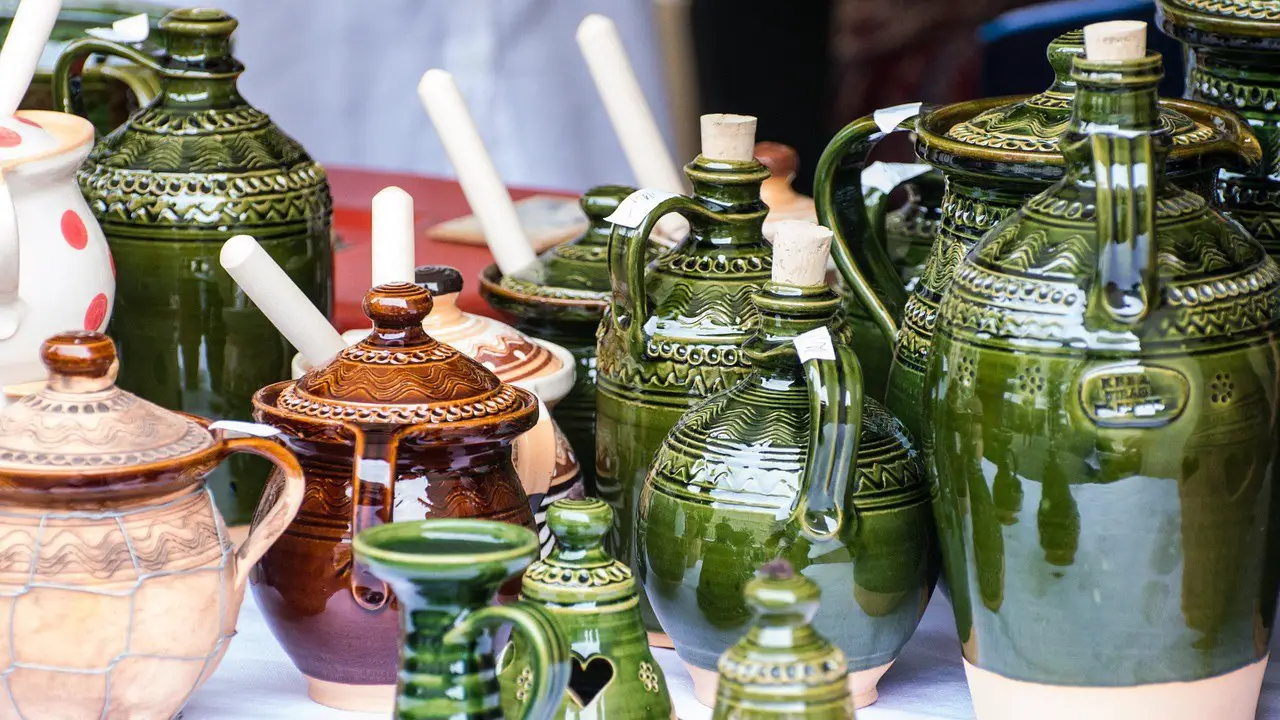
On the other hand, stoneware clay needs a higher temperature to make it sturdy and good to use. It can create denser and heavier objects. Fire clay creates rough objects and requires a very high temperature. Lastly, Kaolin clay is used to make porcelain, and it does not have good plasticity.
Now, let’s discuss these four types of ceramic clays in detail, including their properties and usages.
- Earthenware clay: Earthenware refers to clay that is heated at lower temperatures of 1000°C – 1150°C. One can make it using molds. Earthenware clay is non-vitreous, and thus it is very soft. Being highly porous, it takes in a lot of water poured into it, and therefore there is a two-step process for making earthenware pots.
The initial stage includes giving shape to the pottery. The second step is intricate, as it consists of the firing of the ceramic body with a glaze, which is a mixture of silica, fluxes, and aluminum oxide. This mixture forms a glossy surface over the earthenware, thereby making it non-porous and waterproof, and fit for use in household purposes.
- Stoneware clay: Stoneware clay requires the right kind of heating technique to form a beautiful pottery work. This type of clay is usually fired at a high temperature of 1100°C – 1280°C. It doesn’t require two-step heating or firing, as in the first firing itself, the clay takes a non-vitreous structure and forms a glazed surface on the pottery. At this stage, the stoneware clay becomes almost waterproof, but it can be further treated; however, it is not necessary.
The interior walls are usually slipped with a clay mixture to get rid of the porous nature of the vessel so that you can store anything in it, from pickles to kerosene. For the outer body, salt glazing works to provide a rough exterior and a matte finish. But over time, Bristol glazing took over as it works best for utilitarian wares. The finished product resembles a hard-stone-like material that can be pretty long-lasting and sturdy.
- Fire-baked or Terracotta clay: Terracotta clay or fire-baked clay is one of the fanciest forms of pottery out there. While getting it ready for a kiln, make sure that the clay is dry, as it would be entering an oven at temperatures around 1000°F – 1900°F. If there is water in the mixture, steam cracks might pop out in the pottery, thereby irreversibly cracking it.
Terracotta clay mainly finds its use in making vessels or mugs that act as storage containers. Being nearly 10% porous, it keeps the materials inside it cool. The right kind of artisans can create extraordinary art pieces made from terracotta clay. Earlier, terracotta clay was prevalently used in most temples or stupas, as the designs were quite intricate yet exquisite.
- Kaolin clay: This type of clay is usually white and derived from the mineral Kaolinite. It is non-plastic as compared to other regular clays. Though Kaolin is white, the hues indicate the region of its mining. For example, the green shade means plant remains, while the reddish-brown hues indicate higher levels of iron oxide deposits. It is usually heated at 1200°C – 1400°C. It is often said that animal bone is grounded and added to the clay mixture, making it translucent and even more durable.
FAQs
What is the easiest clay to work with?
While there is a wide range of clay available in the market, polymer clay is the best clay for kids and beginners. It has many benefits, including:
-
It is easy to fold
-
It comes in various colors
-
It can be baked in household ovens
-
It maintains its shape better than air dry clay
How do you soften polymer clay?
-
You need to start by chopping your clay into small pieces with the help of a blade or knife.
-
After this, add some clay softener or liquid polymer clay to it; you can also use baby oil.
-
Now, mix it well and leave it for a few days in an air-tight bag.
-
After a few days, remove the clay from the bag, hold the clay together to bind it, and run it through the pasta machine.
-
Repeat the steps to get desired results
Can I use Ceramic clay as a beginner?
Since it is difficult to work with ceramic clay, it is always advisable to try a few projects with polymer clay. Once you’re sure that you can handle it, you can shift to ceramic clay.
How is ceramic ware different from porcelain ware?
In reality, Porcelain is merely a type of ceramic. In other words, Porcelain itself is ceramic, but not all ceramics are Porcelain. Here, we will provide a detailed comparison of the two types of pottery and the clays used in making them.
Parameters of difference |
Porcelainware |
Ceramicware |
Definition |
Porcelainware is only one category of Ceramic ware and is made from Kaolin, quartz, silica, etc. |
Ceramicware is anything made from a non-metallic mineral fired at high temperatures. |
Presence of thick walls |
Porcelainware does not have thick sides and is brittle. |
Ceramicware always has thicker sides and is less brittle. |
Color |
Porcelainware is translucent and mostly white. |
Ceramicware is mostly always opaque. |
Heat absorption and retention |
Porcelain is highly non-absorbent to heat. |
Ceramicware retains heat and keeps content warm. |
Durability |
Not very durable and is more on the classy side. |
Comparatively sturdy and thermal shock-resistant. |
Dishwasher safe |
No, it is not dishwasher-safe. Hand washing is preferred. |
Ceramicware is dishwasher safe. |
Conclusion
As you can see, every category of clay serves a unique purpose and has a distinct property. If you are a beginner, you must start with polymer clay. When you become comfortable using the polymer clay, you can begin exploring other clays and start experimenting with various projects with them. You never know, in a few days, you might become a clay wizard!


